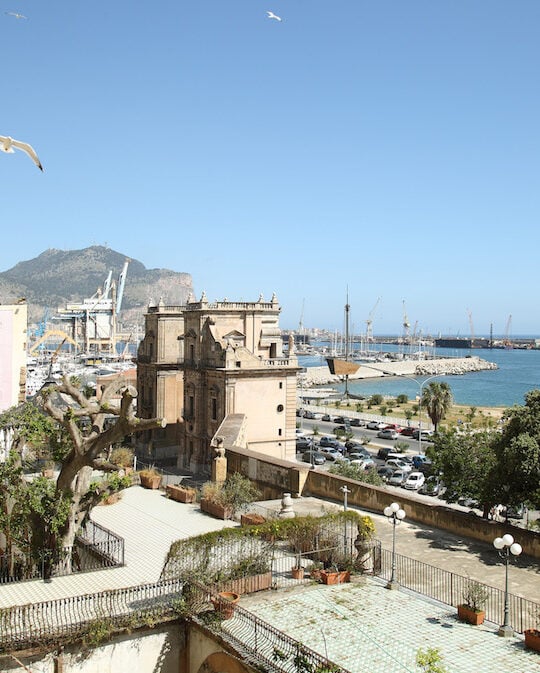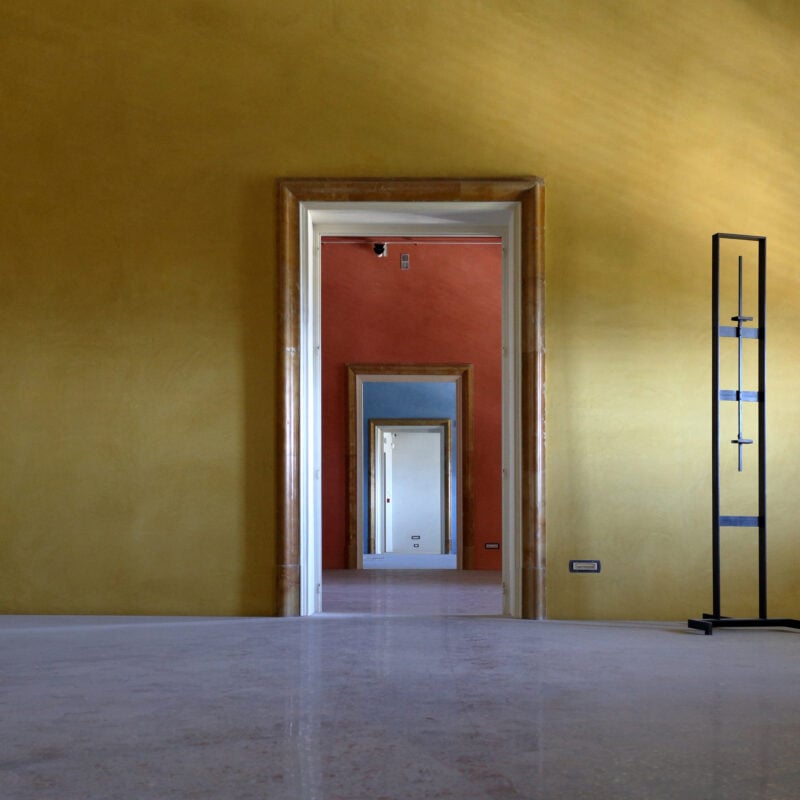
Restoration project
Francesca and Massimo Valsecchi
In 2015, Massimo and Francesca Valsecchi purchased Palazzo Butera and embarked on a massive, privately funded restoration of the building – an unprecedented financial undertaking unknown in Palermo.
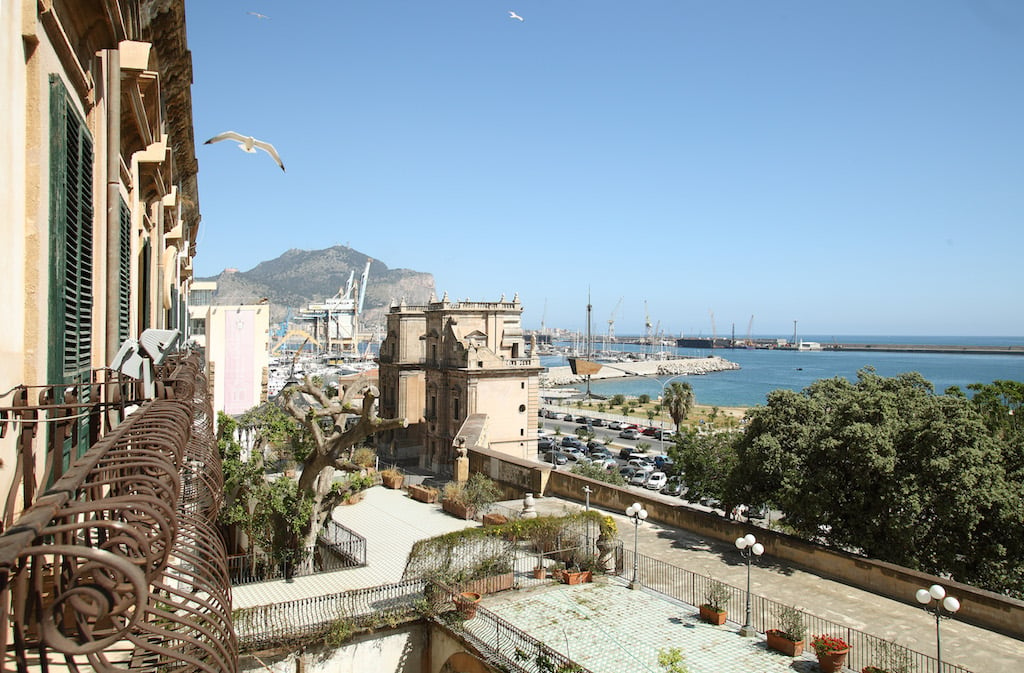
Marco Giammona
The principal engineer was Marco Giammona, who had extensive experience restoring historic buildings in Palermo’s old town. It was he who had first taken the Valsecchis to see Palazzo Butera and who then coordinated the building’s restoration and change of use.
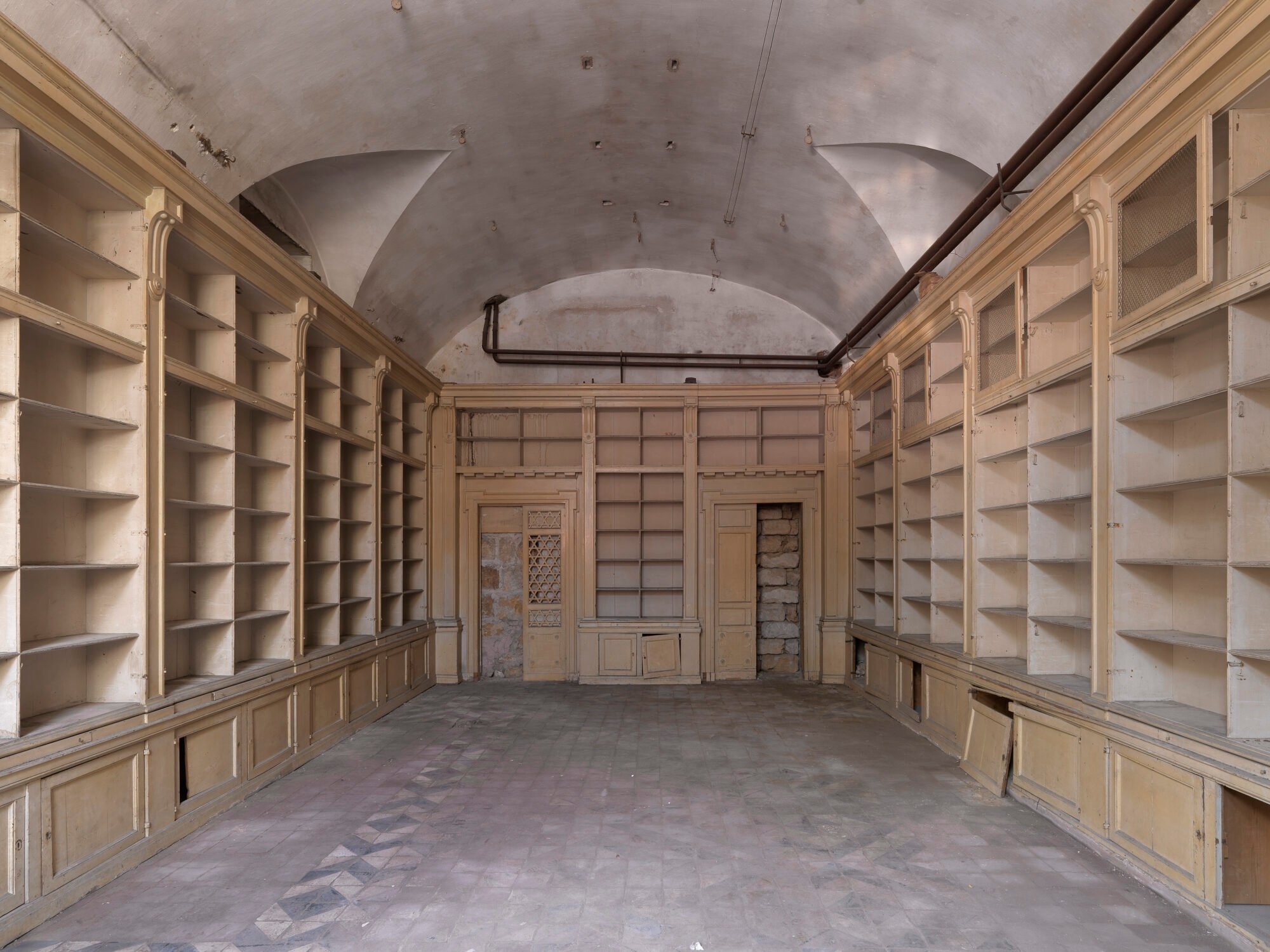
Giovanni Cappelletti
Architect Giovanni Cappelletti led on the architectural plan and on museography. He had already collaborated with Massimo for Milan’s Triennale in 2001 with an exhibition on Christopher Dresser. And again in 2004 for the ‘Tesoro della Statale’ exhibition held at the Rotonda della Besana, also in Milan.
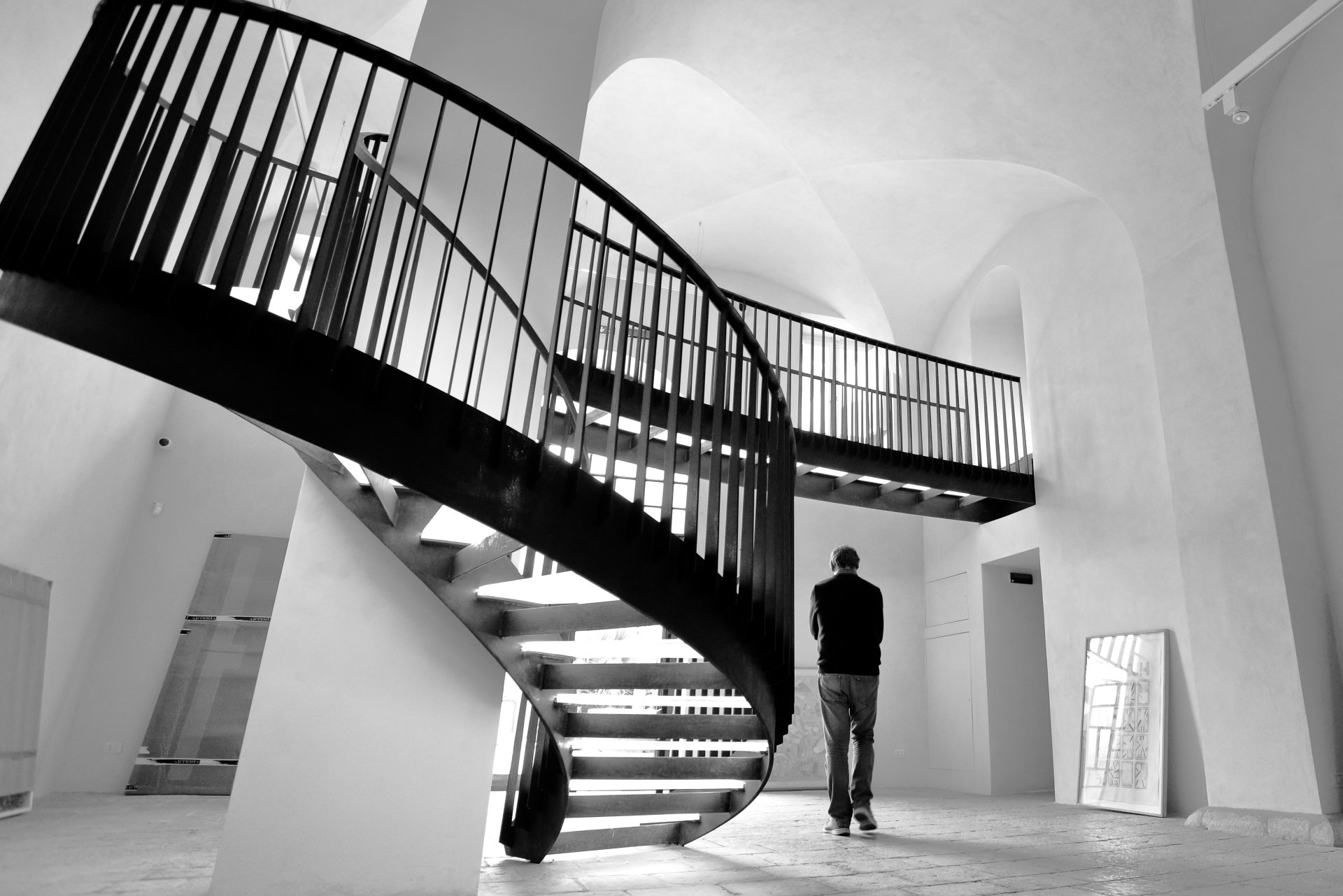
The aim of the Palermitan project was to transform the Palace from a residential building into a centre for culture and research. It had to be capable of housing the Valsecchis art collection and of providing space for research, study and the exchange of ideas. This meant thinking about living spaces, conference and exhibition spaces as well as space for a museum.
Palazzo Butera today
Palazzo Butera, as we see it today, has a complex and articulated structural history. Located in the old Kalsa district of Palermo, the building’s original layout dates back to the end of the seventeenth century, but its architectural configuration dates to the middle of the eighteenth century.
For two centuries, various generations of owners carried out different internal and external transformations and extensions, profoundly modifying its original structure. During the twentieth century, the building increasingly lost its purpose as a private residence, undergoing profound changes, especially on the second ‘piano nobile’.
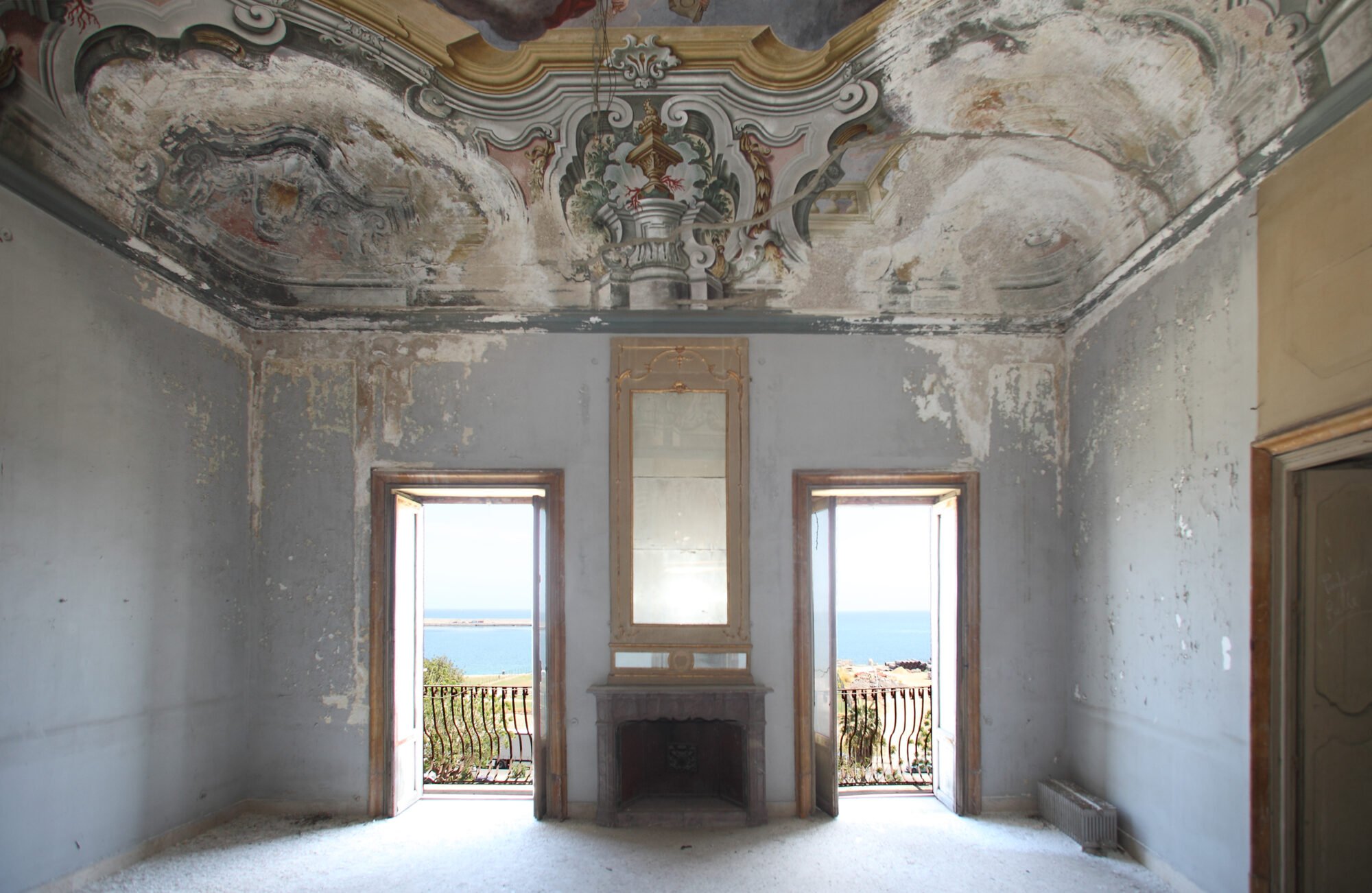
The two main floors
The building is characterised by the rarity of having two ‘piani nobili’ with both being of equal historical importance and both having the same layout.
The first ‘piano nobile’ was the residence of the Prince of Butera, while the second was the residence of his eldest son and heir, the Prince of Pietraperzia.
On both floors, a vast gallery serves as a monumental entrance hall that then leads onto an impressive enfilade of frescoed halls of between six and seven meters high and that overlook the sea.
On the city-facing side of the building, there are smaller rooms with a height equal to about half that of the main halls. This constitutes the other peculiarity of the building – that there are three floors on the seaward side (including the ground floor) and five on the city side.
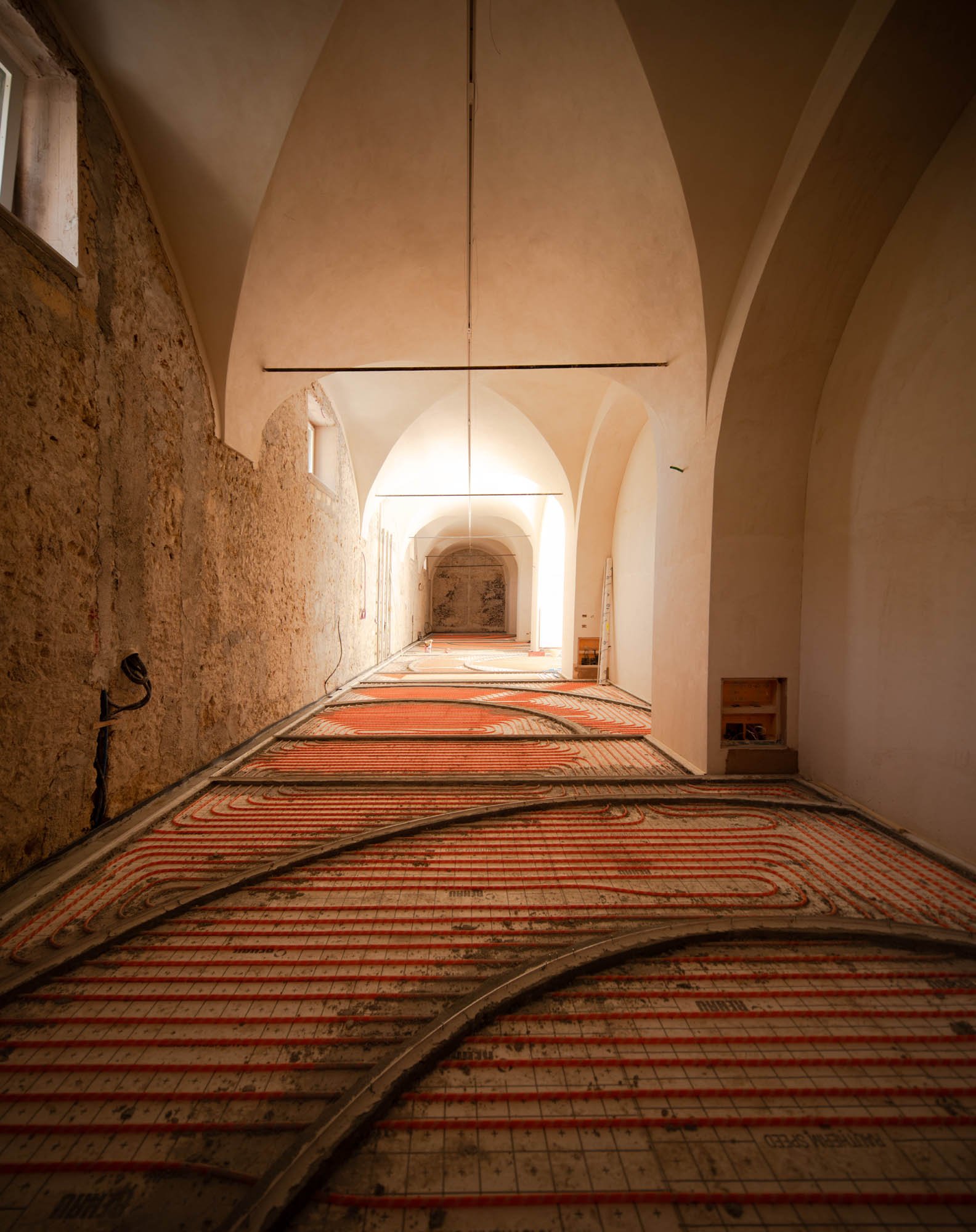
The two courts
In addition, the building has two entrances, each leading onto its own courtyard. These are then connected internally by an archway. The first of these is the Palm Courtyard, coming off of which used to be the stables, coach house, tool sheds and archives…. In other words, the working heart of the original residence.
The second courtyard, the Jacaranda Courtyard, was a formal reception space designed by Giacomo Amato to include four fountains and other decorative elements. One of the fountains is still to be found directly opposite the main entrance.
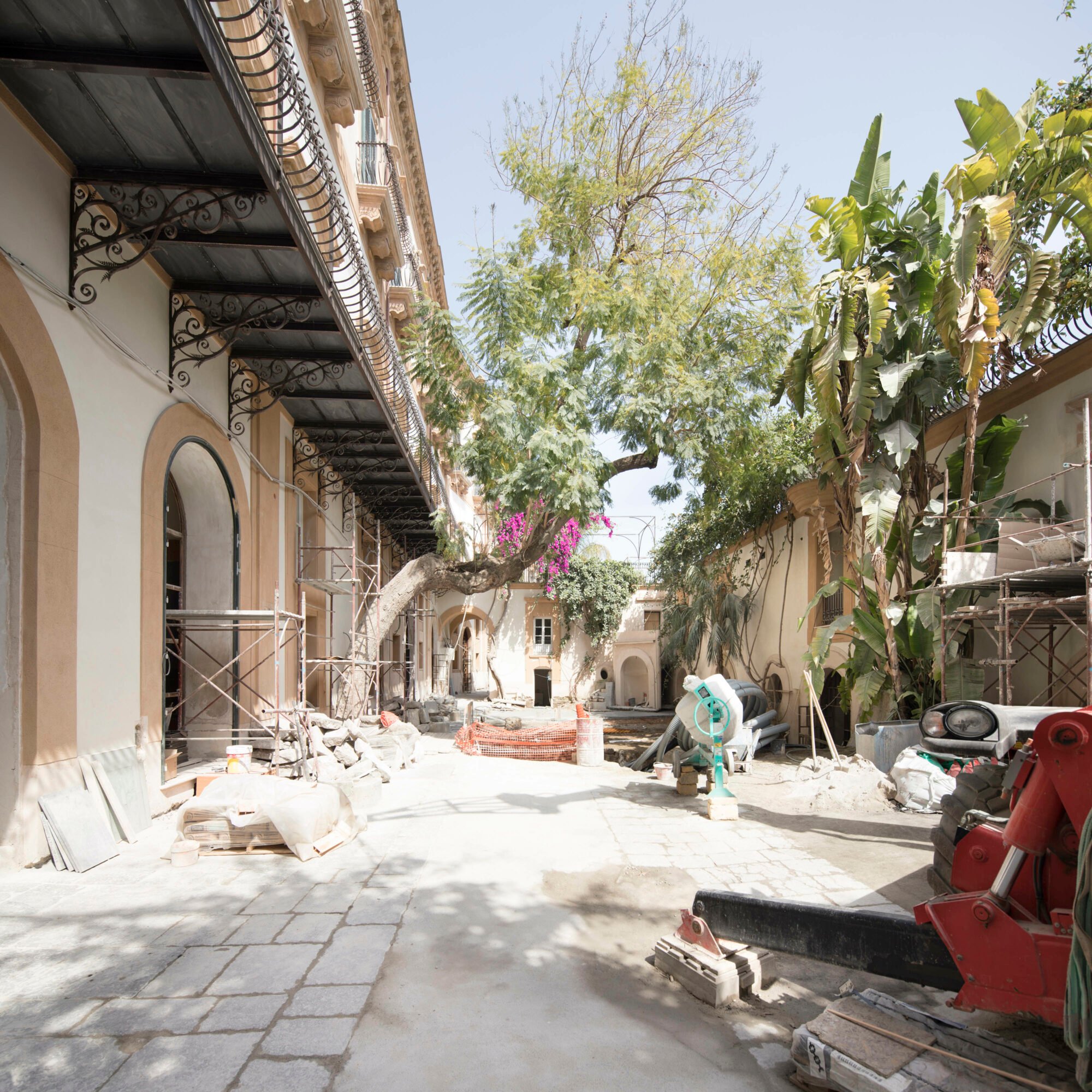
Space distribution
Giovanni Cappelletti’s main purpose was to define how the various new functions demanded by the project would be distributed within the Palazzo, and how these would connect and flow with each other.
After a preliminary phase removing many of the buildings more recent excrescences and dealing with the structures’ stability, the project then proceeded in a manner that was reactive rather than planned. During the building works, every unforeseen revelation became an opportunity for improvement and creative thinking.
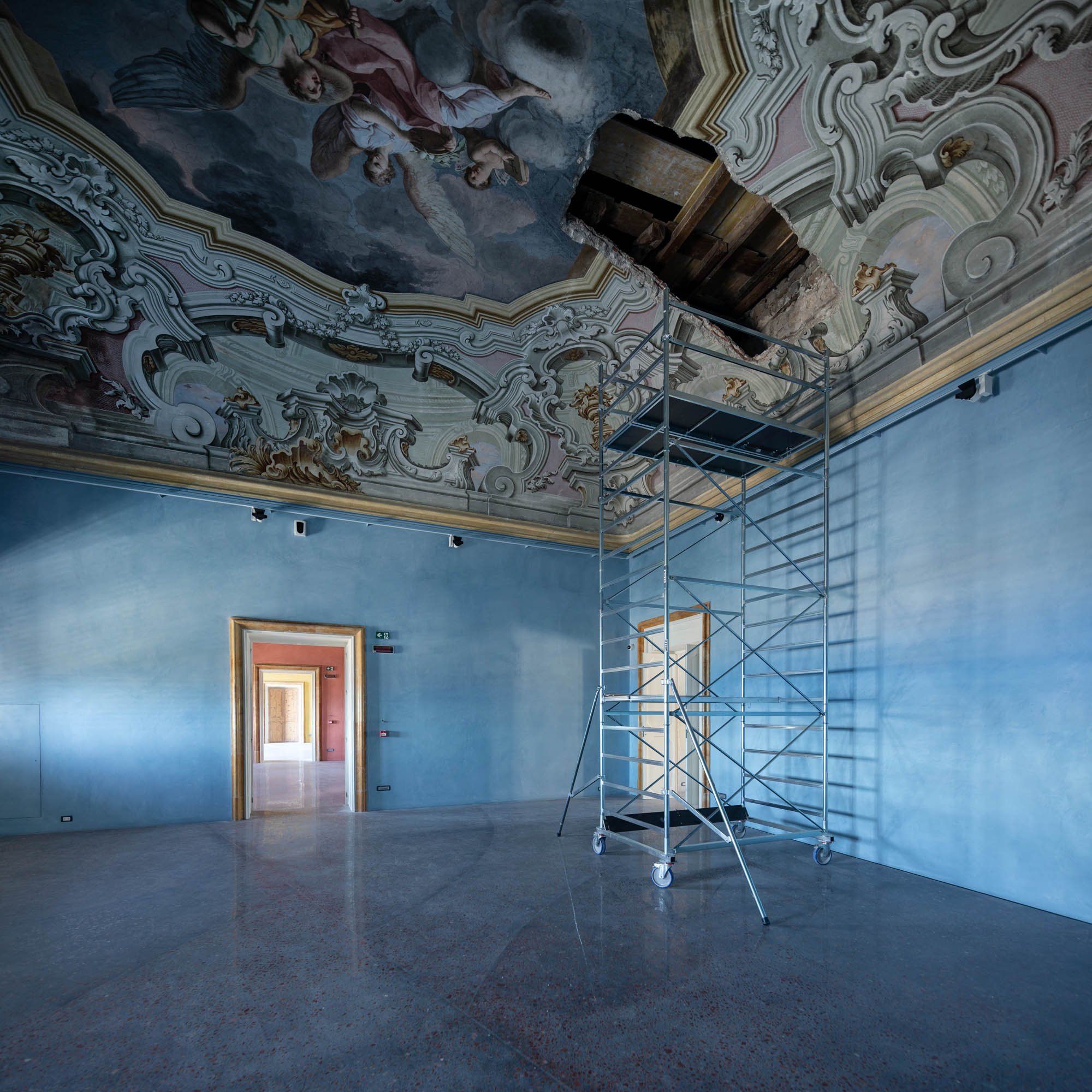
A constant and patient exercise of observation of the palace
Ultimately, the current layout of Palazzo Butera is born from constantly and patiently observing the palace and its original spatial and distributive character. And it is also born from a desire to approach original materials with sensitivity, avoiding disproportionate or incongruous additions, unauthentic restorations, or general fakery. But this has been balanced by grafting on a new architectural language that ensures the building is not stuck in the past and belongs to the present.
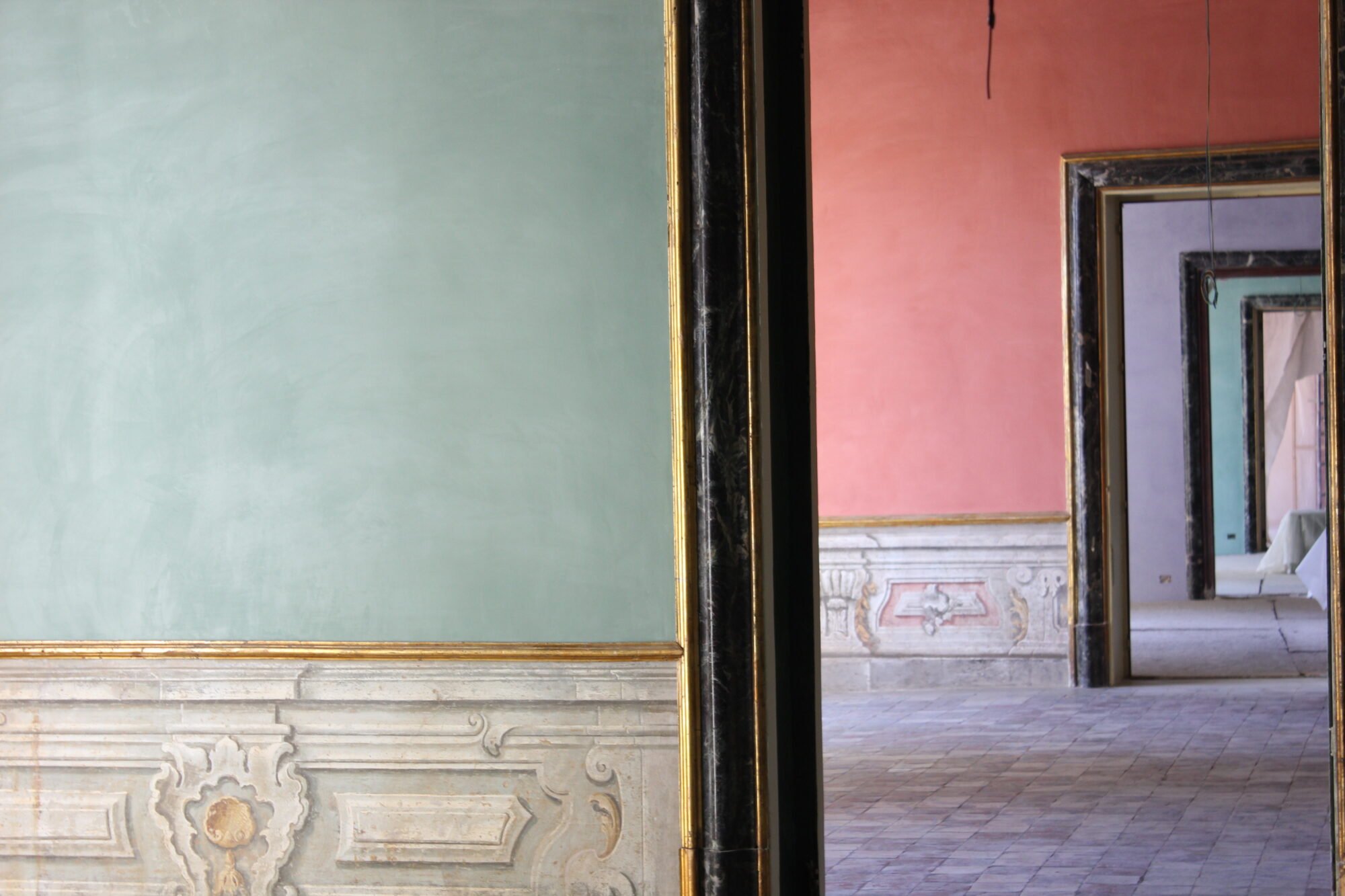
A clear choice has been made in the rebirth of the building, to balance its conservation with the use of interventions that must necessarily speak the language of today. And there is a clear choice to avoid a slavish desire to reconstruct something from the past.
MadoniEat
The grocery and bistrot, MadoniEat, is a part of the building but can only be accessed from Via Butera. Specialising in food produced in the Madonie National Park close to Palermo, it has been set up by a team of people that includes the building firm that undertook the restoration of the Palace.
Designed over two floors, the ground floor hosts the grocery store, with dining available upstairs. The light-hearted and colourful furnishings, also designed by Giovanni Cappelletti, mirror the heavier geometric motifs of the glass and iron doors found throughout the Palace.
On the ground floor recycled maiolica terrace tiles have been used and yellow rubber has been used elsewhere.
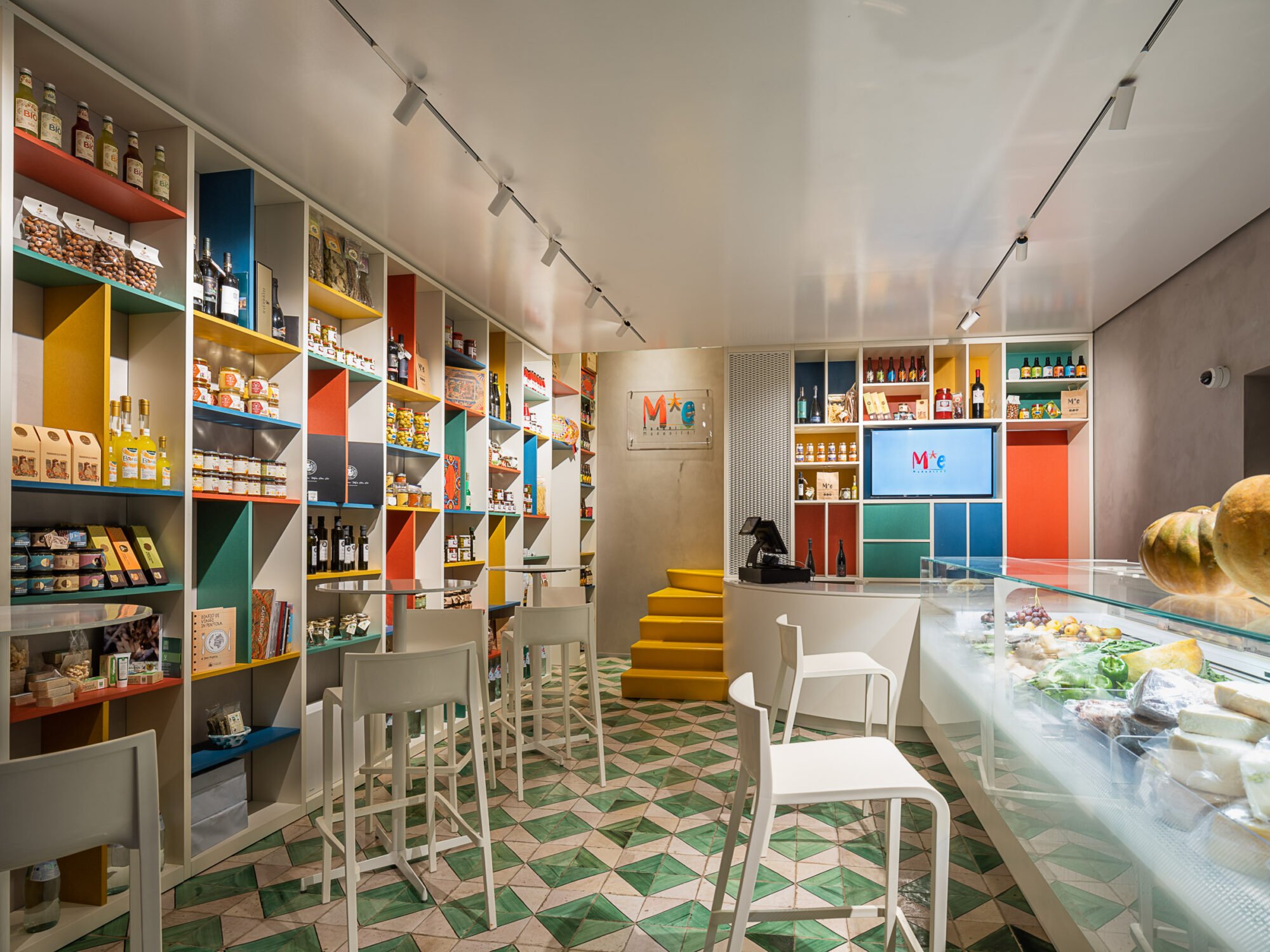
“Le Cattive” café, the promenade and the sea front
Under the restored terraces is the Palace’s cafeteria. It connects a public walkway called ‘Passeggiata delle Cattive’ with the Corte della Jacaranda, thereby allowing the possibility of connecting the seafront through the old city walls, to the city behind it.
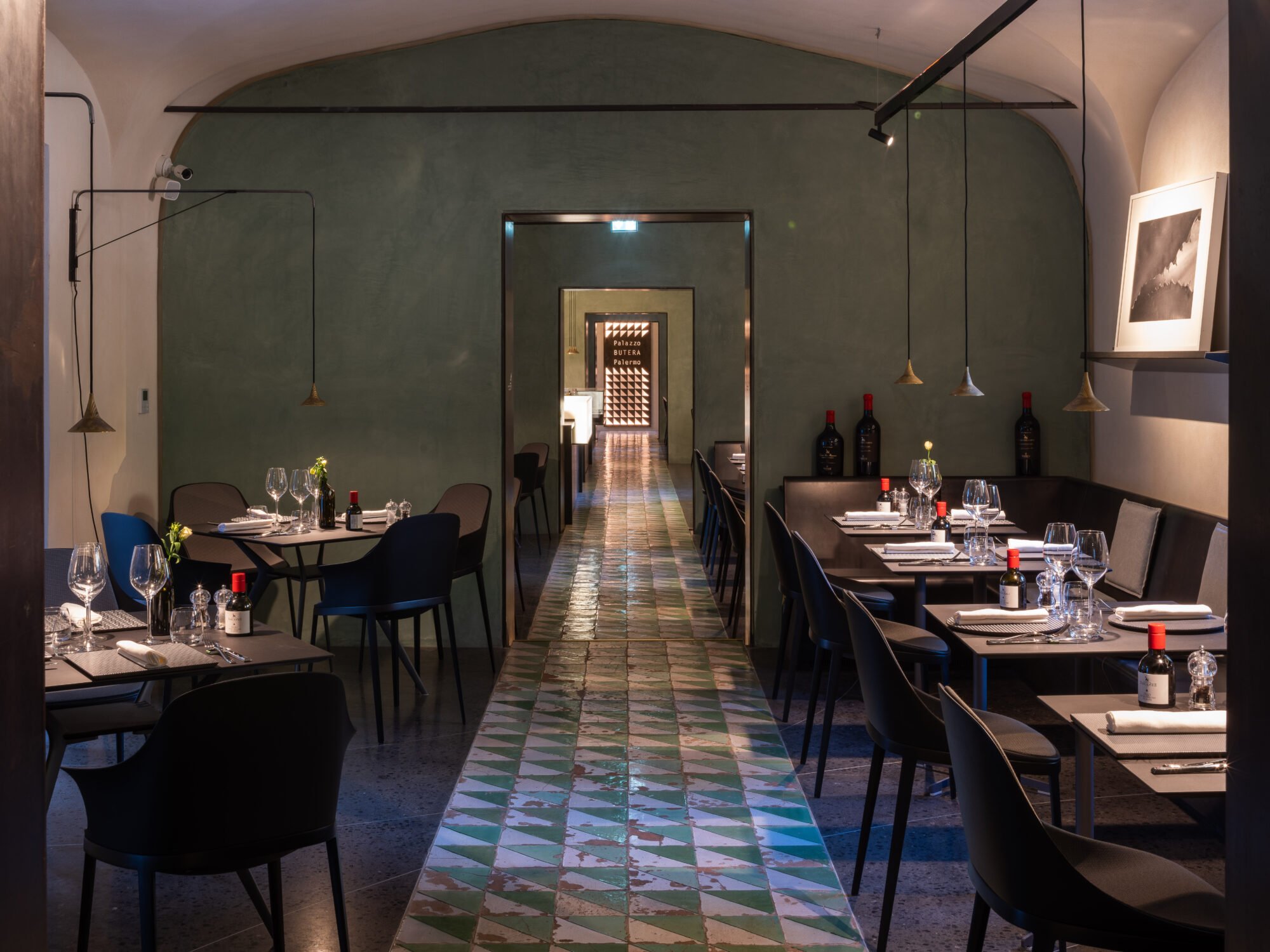
The three new stairs
A series of three new double staircases, inserted within the confines of the pre-existing flowerbeds, deal with the height difference between the Cafeteria and the Walkway. To increase the attractiveness of the public space, Architect Cappelletti included planting scheme in his design. Palm trees, fragrant shrubs and coloured bougainvillea add natural shade and create a delightful place away from the noise and pollution of the traffic below.
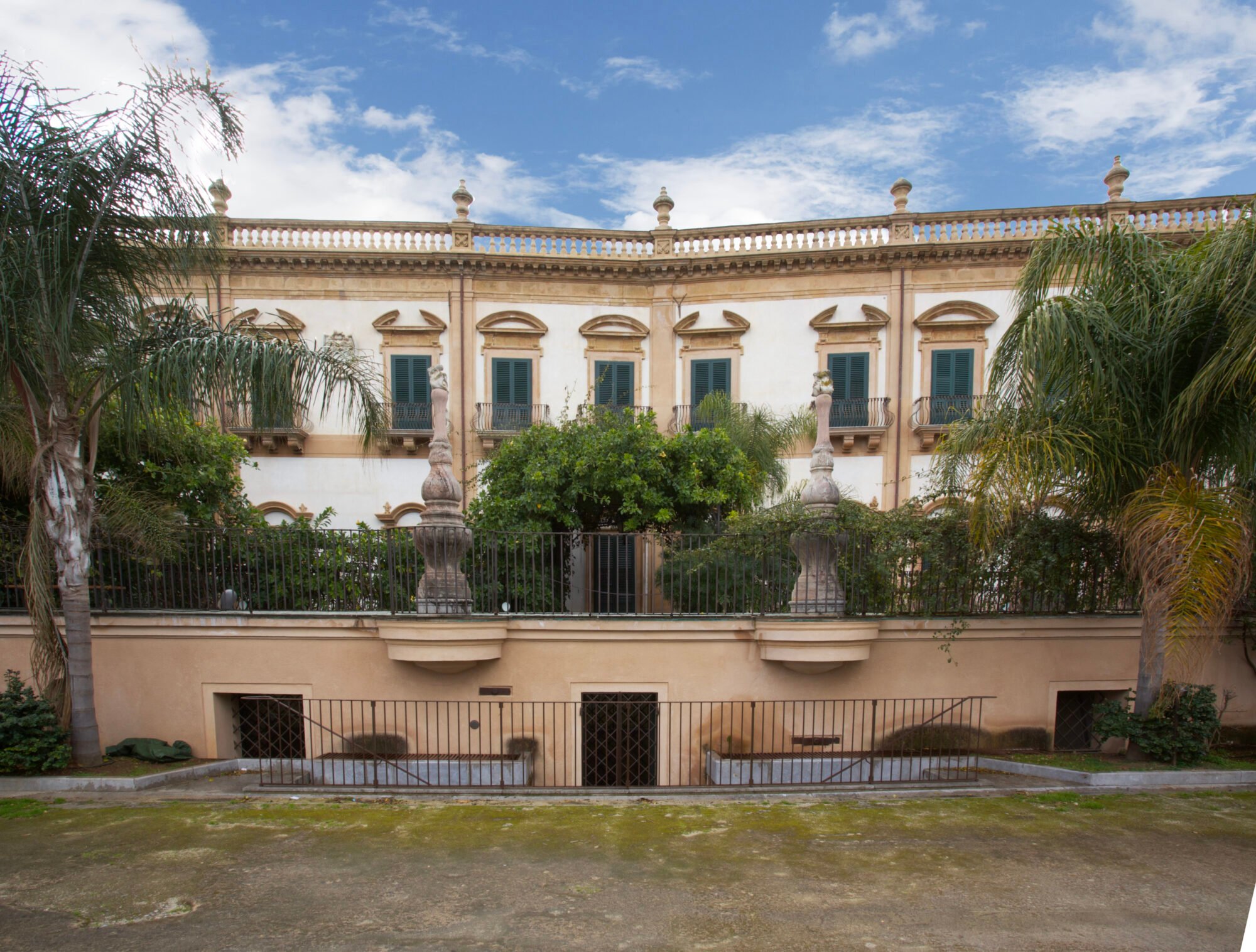
The Cafeteria is a series of interconnecting spaces under vaulted ceilings. The walls have been finished in a green marmorino. These rooms are reminiscent of train carriages, and Cappelletti took this inspiration to design the iron seating, and the iron-clad doorways mark the separation between the ‘carriages’. For the floor, Cappelletti again used the old tiles recycled from the terrace above that creates a runner down the length of the cafeteria, and on either side of this is a polished Venetian Seminato floor.
The guest rooms
All the spaces in the mezzanines and attic of the building have been transformed into guest quarters to host scholars, researchers and artists. Each room is ensuite, and there is a communal eat-in kitchen that allows guests to share food and exchange their interests, ideas and knowledge.
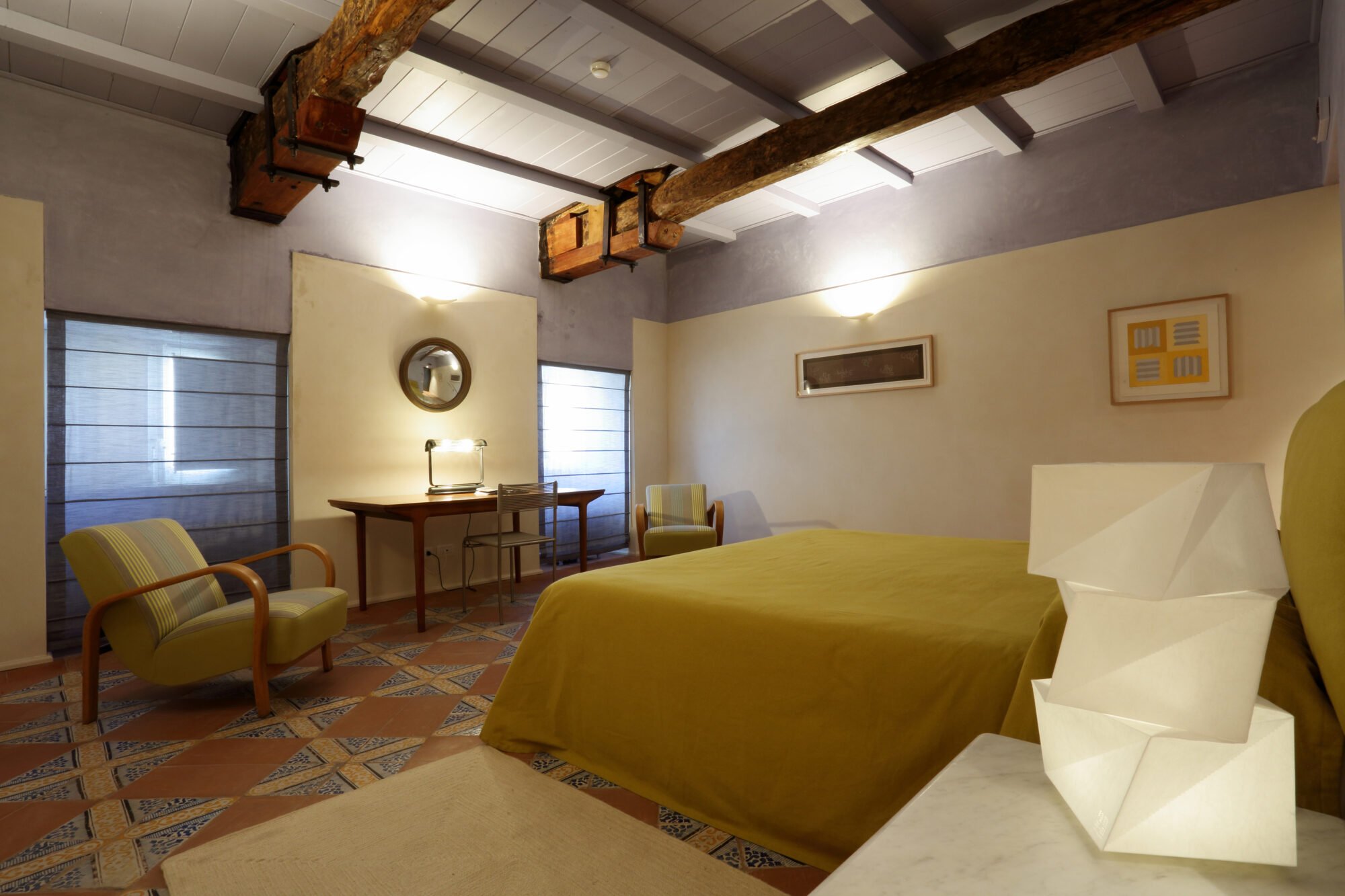
There is a complete account of the complexities of Palazzo Butera’s restoration in Giovanni Cappelletti’s book “Palazzo Butera – Project and Construction Site” published by the Palazzo Butera Foundation in December 2023.
Palazzo Butera: the book
A QR code in the book gives access to a video describing all the phases of the restoration. This is a full visual description, specifically to accompany the book. There is also an edited version of these videos displayed throughout the Palazzo’s exhibition spaces.
In the book, Cappelletti describes the many choices made during his seven years on the construction site and he also underlines the crucial contribution made by so many others – structural engineers, plant engineers, restorers, artisans and builders. From the pages of the book there emerges a description of an orchestrated harmony that tells an almost autobiographical story of a unique professional and human experience.
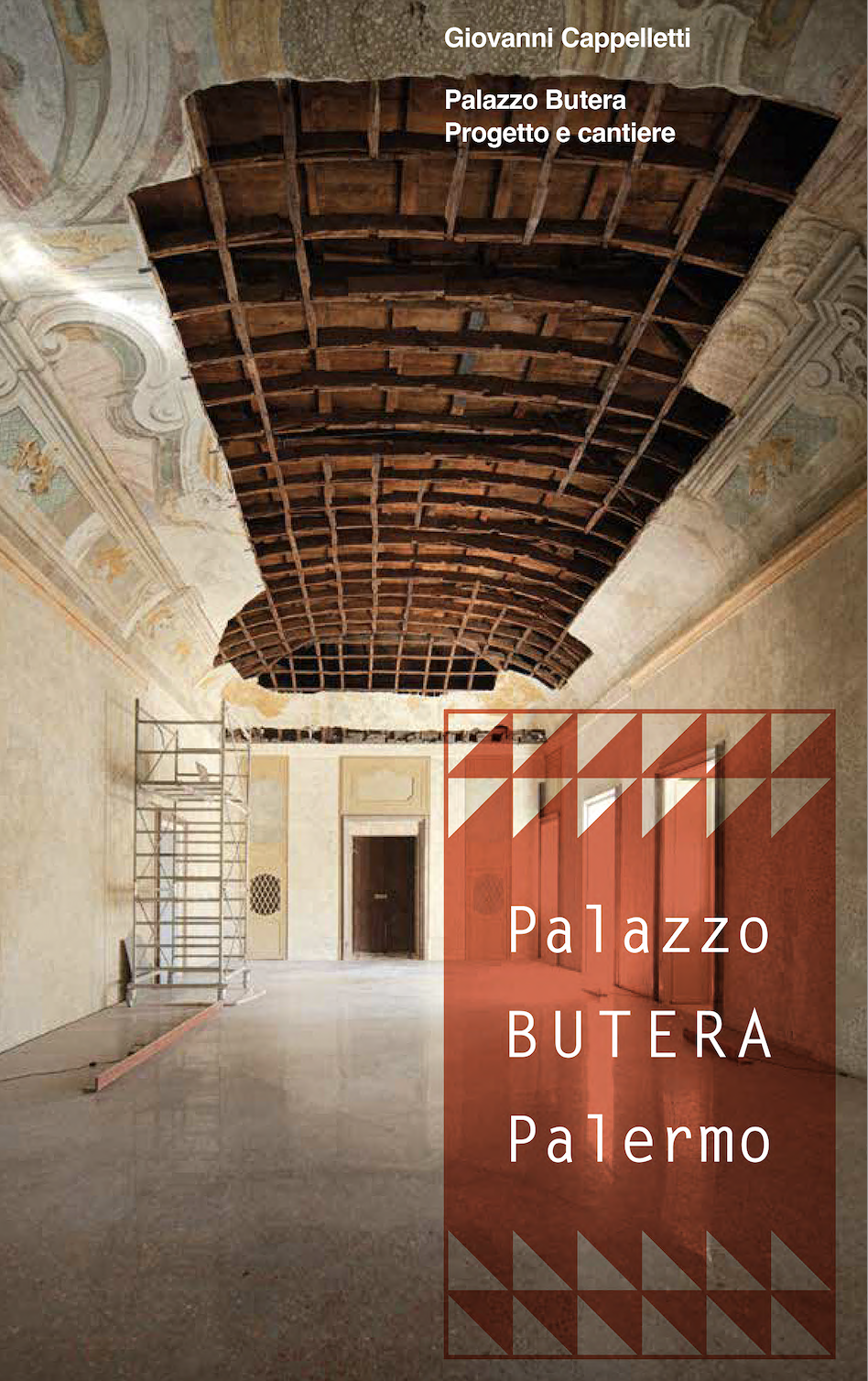
Restoration project
Project Manager: Marco Giammona
Architectural and Museographic Design: Giovanni Cappelletti
Works Management: Giovanni Cappelletti; Marco Giammona; Tomaso Garigliano
Collaborators in the design and construction management: Dario De Benedictis with Salvatore Pagnotta, Alexia Messina, Amalia Randazzo and with Ruggero Rizzuto
Structural Design: Alessandra Giammona; Marco Giammona; Dino Spitalieri
Plant Design: Giuseppe di Natale (with Giampiero Urone)
Construction works carried out by ATI Gangi Impianti s.r.l./Emmecci s.r.l. (Santino Patti, Mario Puglisi, Santo Lipira)
Technical Manager: Santino Patti
Technical Director: Roberto Coralli
Site Manager: Gaetano Alaimo
Restoration Manager: Vittoria Maniscalco (with Dalila Belato, Antonio Crisci, Lorena di Noto, Roberta Mirabella, Sara Riolo, Ausilia Sparacello, Ra Testa, Andrea Vasile, Manuela Virga, Giancarlo Zaffora)
Carpentry: Falegnameria Franco Doccula
Ironmongery: Chianetta Ferro s.r.l. (Gianni Chianetta, Roberto Dinolfo)
Iron gates and doors: Carmelo Nasello (Metal serramenti)
Glass Supplier: Mario Buscetta
Lighting Fixtures Supplier: Artemide s.r.l. (Massimiliano Troja with Alessandro Di Trapani. Special
Lighting: Davide Farioli)
Plasterboard Countertops: Baiamonti
Guest House Furniture: Antonio Rizzuto (Escooh s.r.l.)
Display Cabinets, and furniture for study areas and offices: Salvatore Bottone Wooden Furniture
Cafeteria “Le Cattive”
Kitchen design and coordination: Diego Emanuele
Cafeteria Furniture: Luca Chinnici
Special Systems: Michele Saitta (SAGRIM s.r.l.)
Bottega “Madonieat”
Furniture: Doccula Carpentry

